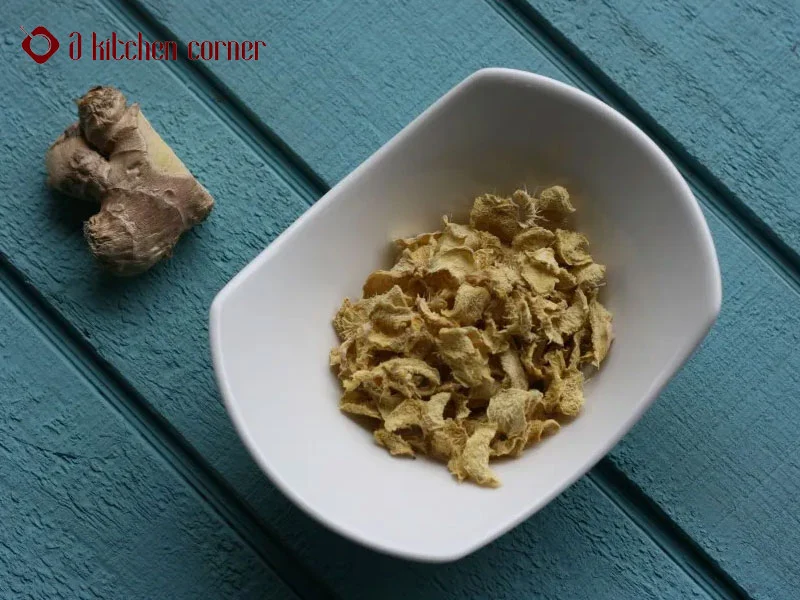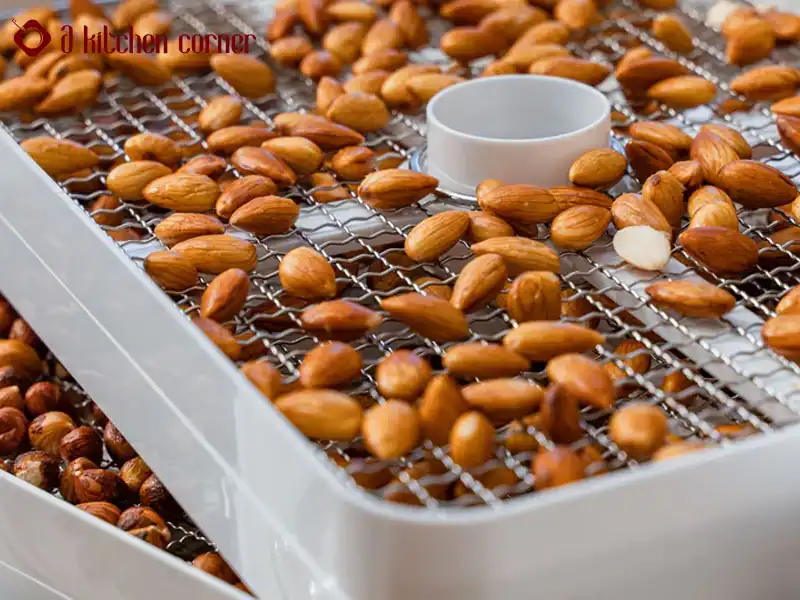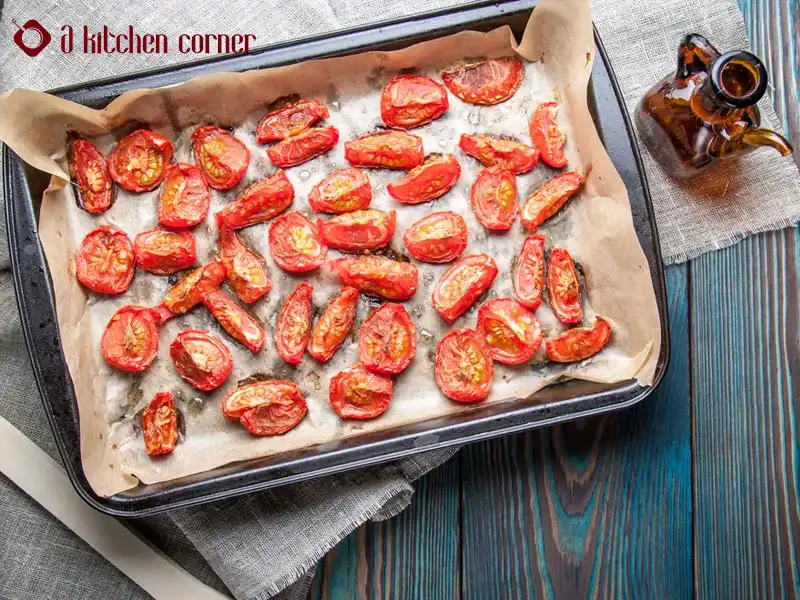
In this article, I’ll show you how to dehydrate food without a dehydrator.
The preservation of food through drying dates back to the dawn of time. According to available evidence, our distant ancestors deliberately dried food as early as 12,000 B.C. This timeline outlines the development of food preservation. Before the development of electricity, let alone the current dehydrators, this occurred thousands of years ago.
This shows you don’t need to spend money on a dehydrator to preserve your favorite foods. I also have some methods for drying food without power for individuals who live off the grid.
Contents
How to Dehydrate Food Without a Dehydrator?
Dehydrate Food With The Regular Oven
How to dehydrate food in oven? Most homes have an oven, which is a common appliance. It can be used properly for food dehydration even if it isn’t precisely its intended usage. Only the temperature and time settings need to be understood.
Remember that if you haven’t tried dehydrated foods, using your oven will be a terrific way to do so and let you determine whether or not you want to buy a dehydrator.
You’ll need the following to dry your fruits or jerky in the oven:
- Cookie trays (any flat pan will do, though)
- Candle paper
- swordfish knife
- Spatula
- Citrus juice (used when preparing fruits)
Your fruits, vegetables, and meat should all be cut into 14-inch (0.63 cm) pieces before being placed on a cookie sheet lined with wax paper.
The next action is to get your oven ready for the job. Set it at the lowest temperature possible—ideally 180°F. Set your oven’s temperature below 200°F if it doesn’t have these settings. Most foods should work with this.
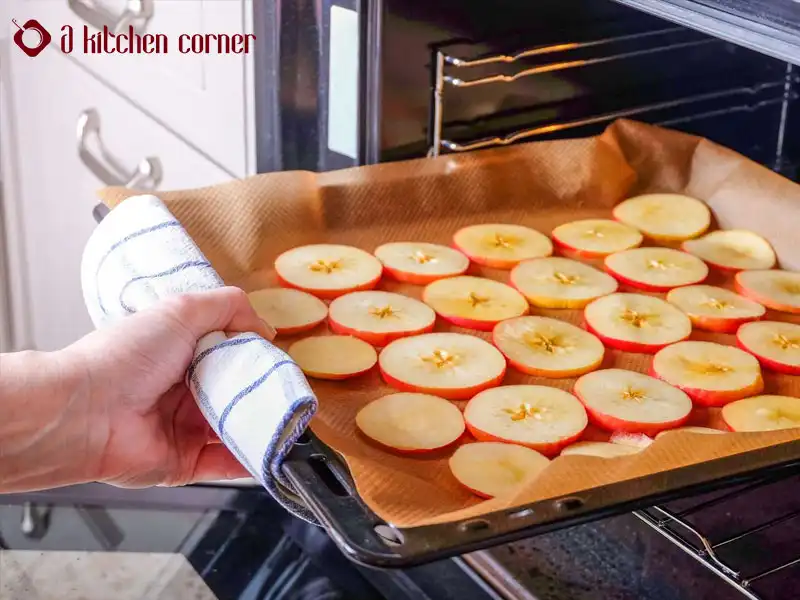
How to Dehydrate Food Without a Dehydrator? – It’s easy with an oven
Tips For Drying Food In The Oven
- To guarantee uniform dehydration, rotate the meal periodically while it is drying. I suggest turning the food slices regularly (say, every hour) to ensure even dehydration on both sides for the best results.
- Place the pans a few inches apart if you plan to use many pans to ensure even air circulation.
- Food must be properly dehydrated in a conventional oven for 6–10 hours. Juicier foods generally take longer to prepare than drier foods. Nonetheless, utilizing an electric oven could appear a bit pricey.
How to dehydrate food without a dehydrator: Using A Toaster Oven
If you don’t intend to dehydrate a large quantity of food immediately, your toaster oven should work fine. The biggest advantage of a toaster oven to dehydrate food is that you won’t have to stop using the main oven.
As most of them have much lower temperature settings than standard ovens, I also found them more trustworthy.
How to Use a Toaster Oven
- Lower the temperature to the lowest possible level (120°F to 150°F is a decent range to eliminate most bacteria and offer you a delicious snack).
- To avoid food clinging to the metal pan while using a toaster oven to dry food, the food must still be sliced into thin slices and placed on parchment paper.
- The tops should be fairly dry after 3–4 hours. To stop it from burning, flip it to the side.
Tips For Drying Food In A Toaster Oven
- Most toaster ovens do not have a uniform fan to distribute heated air across the food as a conventional oven does. As a result, you need constantly turn the food to ensure even drying.
- Second, with time, the toaster’s internal temperature tends to rise. As a result, you’ll need to watch it carefully to keep the food from burning.
- You can maintain the temperatures by using an oven thermometer to guide you. Consider keeping the oven door slightly ajar if you don’t have one to prevent heat buildup.
Dehydrate Food Using A Microwave
You probably didn’t know you could dehydrate food using a microwave. We all understand that this device functions by retaining moisture, which is the exact opposite of dehydration. But with a few simple techniques, you can quickly dry your fruits and herbs. Even though a dehydrator and a microwave differ from one another
I don’t suggest drying jerky in the microwave because of the preparation’s length. Instead, make jerky using a dehydrator.
Foods that dehydrate quickly, such as apples and herbs, are needed for this technique. The herbs should be cleaned, then dried with paper towels.
How To Dehydrate Apples In The Microwave
- Slice the apples into thin, 1/4-inch pieces. If you desire consistency, use a mandolin. Please do not make them too thin to avoid sticking to the revolving plate.
- As you’ll be placing the apple slices directly on the revolving microwave plate, clean and dry them.
- On the plate, distribute the slices.
- Dry them for 30 to 35 minutes using the defrost option. Keep in mind to rotate them every 10 to 15 minutes. Be aware that using the standard microwave setting can quickly burn fruit slices.
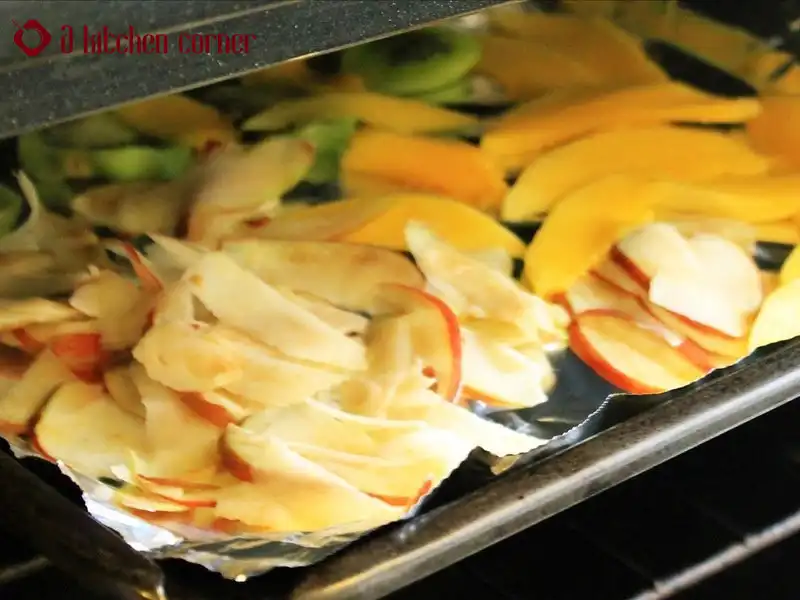
How to Dehydrate Food Without a Dehydrator – You can use a microwave!
How To Dehydrate Herbs In The Microwave
- A cup of the herbs should be arranged on the rotating microwave plate covered with a paper towel.
- The herbs should be dried for 2-4 minutes using the High Power setting.
- To avoid burning the herbs, move them around after every 30 seconds.
- Remove the herbs for inspection after 2-4 minutes. Before placing them in the storage can, if everything is okay, let them cool down. Repeat the process for a minute or two if they aren’t completely dry.
>> Related Post: How to dehydrate ginger with and without a dehydrator
How to dehydrate food without electricity?
As I mentioned, the ancient people didn’t rely on electricity or other modest kitchen machines to dehydrate their food. The same can be done today with great ease. When the power is off, follow these steps to dry your food!
How to dehydrate food without a dehydrator: Using fire drying
- One of the first techniques is this. Vegetables and fruits can also be dried on the ground next to the fire, however, it works best for meat.
- To use fire to dehydrate jerky:
- Slice the meat into thin pieces to prepare it.
- To start a fire, use hardwood. A fire pit or a charcoal barbecue are also excellent options.
- Create a method for hanging your meal over the fire. The ideal solution for making a bed is to use poles. Then you will hang your beef strips from the poles across the flames. The meal could also be hung over the fire using strings.
- Remember that you shouldn’t cook food by placing it too close to the fire. The food should be hung so your hand may remain burn-free for a while.
- Leave the fire smoldering all day until the beef strips are exactly right. After all, the jerky isn’t flawless, so you should bring some.
- Some fibers should come to the surface when you bend the dried strip, signaling that the meat is ready.
Just hang them in a dry, open area.
How to dehydrate food naturally? You don’t need a dehydrator. Choose a decent location that’s free of insects and other pests. The ideal conditions for this location include adequate airflow and daytime temperatures of 90 to 100 F.
Just make a bag out of a net to keep the pests out. Flowers, tiny fruits like cranberries, and green things respond best to this technique.

Just hang them in a dry, open area
How to dehydrate food without a dehydrator: Using your car.
Your car might serve as a means of transportation and a homemade dehydrator. Parking cars in the sun causes them to heat up a lot. These are perfect for dehydrating food year-round because they also become pretty warm even in the cold.
Drying food inside a car:
- The food you want to dry should be ready. Slice the food thinly to hasten the process and stop mold growth, just like with other dehydration techniques.
- Put the food in trays with room between each serving.
- It might be necessary to dip fruits like apples and bananas, which brown easily when exposed to air, in lemon juice first.
- Place the trays on the seats while covering the food with a thin cloth to keep bugs out.
- Windows should have a tiny gap allowing air to flow through.
Without trays, you may hang the food from threads, carefully keeping it away from objects. You may put a small weight on either side of the windows and string many strings. Your food should be slowly dried inside the automobile by hanging out on the “line.”
For those who reside in places with intense sunlight, put your food on trays and place them on top of the car. To keep the pests out, use a net or a light cloth.
Use a black tarp or a clean trash bag to dehydrate food.
A black tarp and trash can generate heat when left out in the sun. This aids in producing the ideal drying environment for a range of goods.
Your food will require some defense against flies and other insects. A net or thin fabric spread over the top can be beneficial.
How to dehydrate food without a dehydrator: Using a DIY dehydrator
Through the use of a heating element, a food dehydrator generates heat. A fan then distributes the heat across the meal to wring out the moisture.
Based on this idea, you might create a homemade food dehydrator with materials already in your home. If you need more ideas, check out these 10 uses for food dehydrators. I’ve provided instructions for building a homemade solar or electric food dehydrator in this article.
Final thought – How to dehydrate food without a dehydrator
Any of the methods mentioned above can be effective. You will learn more and achieve better outcomes the more experiments you conduct. It’s a fantastic method to experiment with dried foods without making a significant initial commitment. It might be acceptable for people who intend to dehydrate little amounts of food occasionally.
Food safety is crucial with any method you select. The significance of this cannot be overstated. Keep in mind to prioritize safety!
Before trying any of these methods, do your due diligence! Find out the truth about drying times and safe temperature standards. Especially if you want to make jerky, this is crucial.
With any food, inappropriate temperatures can cause food to decay and become unfit, and a lack of airflow can cause condensation, leading to mold growth or other food spoiling.
Ok, now we believe that you get how to dehydrate food without a dehydrator. Try whether you use another device or employ a do-it-yourself approach. See how delightful eating better can be by making your own dried foods at home!

